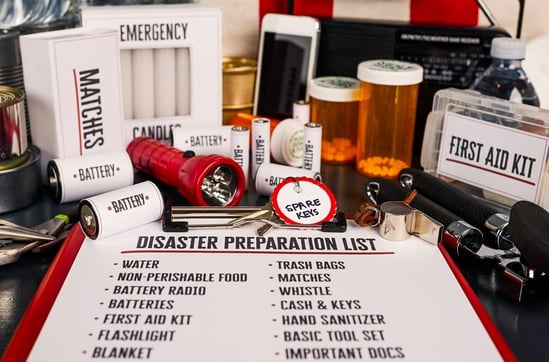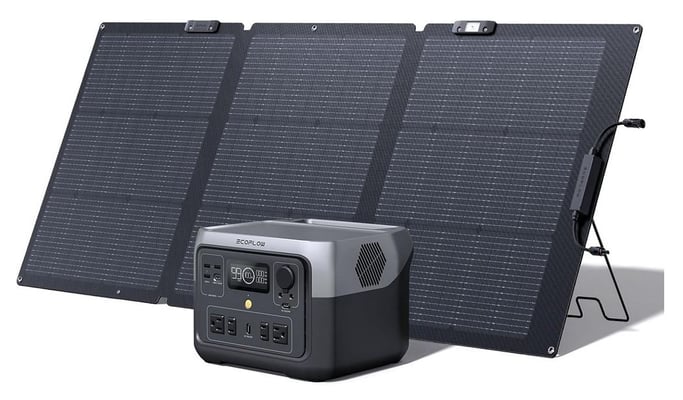Storm Season Survival: Essential Tips Every Remote Worker Needs to Stay Safe and Productive!
From securing your home office to managing power outages and staying productive, learn how to protect your safety and workflow during severe weather. Don't wait—get storm-ready now!
10/17/20244 min read


As we enter the later part of October, we’re still in the heart of hurricane season on the U.S. East Coast, which runs until November 30. For remote workers, storm preparedness is not just about protecting your home—it’s also about ensuring your workspace remains functional. With the peak of storm season winding down, but the threat of late-season storms still very real, now is the time to make sure you're ready for any potential disruptions.
Here’s a comprehensive guide to help you stay safe and productive during storm season.
1. Immediate Preparations: Final Steps Before Storms Hit
While the peak of storm season is typically August through October, late-season storms can still cause significant damage. Use this time to finalize any preparations:
Review Your Emergency Plan: Ensure your household has an up-to-date emergency plan. Know your evacuation routes, emergency contacts, and nearby shelters in case a storm threatens your area.
Double-Check Your Supplies: By this point in the season, you should have basic emergency supplies on hand. Make sure your kit includes non-perishable food, water, batteries, flashlights, first aid kits, and essential medications. If you're running low, restock now before a storm warning is issued.
Secure Important Documents: If you haven't already, back up your important work files to cloud storage or an external drive. Store personal and financial documents in a waterproof container or scan them for digital storage.
2. Protecting Your Home Office
Your home office is your livelihood when you work remotely, so it’s critical to protect it from potential storm damage. Here’s how:
Power Backup: Power outages are common during storms, especially on the East Coast. If you haven’t already invested in a UPS (Uninterruptible Power Supply), now’s the time. It can provide backup power for your computer and essential devices long enough to save your work and shut down safely. If possible, consider a generator for extended power outages.
Internet Backup: Internet services may go down during storms. A mobile hotspot can be an invaluable backup for staying connected during short outages. It’s also a good idea to download important documents and files for offline use in case the internet is out for an extended period.
Protect Electronics: Plug your electronics into surge protectors to avoid damage from power surges. Make sure your computer, modem, and router are in a safe area, away from windows where rain or water could damage them.
Reinforce Your Home: Before the next big storm, inspect your windows and doors. If necessary, install storm shutters or use plywood to cover vulnerable windows. Secure any outdoor items that could become projectiles in strong winds.
3. Stay Informed and Ready to Act
Even late in the season, it’s crucial to stay vigilant and keep an eye on weather reports. Here’s how to stay informed:
Set Up Weather Alerts: Sign up for notifications from reliable sources like the National Hurricane Center (NHC) or local weather services. Many weather apps provide real-time updates, and now is the time to pay attention to those alerts.
Know When to Evacuate: Familiarize yourself with local evacuation routes and shelters. If a late-season storm threatens, don’t hesitate to leave. Pack work devices, chargers, and essential equipment in your evacuation kit, so you're prepared to stay connected wherever you go.
4. Managing Your Work During the Storm
If a storm is imminent, your safety comes first, but there are still ways to keep work disruptions to a minimum:
Work Offline Where Possible: Anticipate power or internet outages by saving work files locally to your computer or offline storage. This way, you can continue working even if your internet connection is lost.
Charge All Devices: Ensure your laptop, phone, and other essential devices are fully charged before the storm hits. If you have portable chargers or power banks, charge those as well.
Safety Comes First: If conditions worsen, focus on your safety and that of your family. Move to a safe location if necessary and follow all local government orders regarding evacuation or sheltering in place. Your work can always wait until it's safe to resume.
5. After the Storm: Getting Back to Work
Once the storm has passed, it’s time to assess your situation and gradually return to work. Here’s how:
Assess Home and Work Damage: Before jumping back into work, ensure your home and office space are safe. Check for water damage or structural issues that may have occurred during the storm.
Communicate with Employers or Clients: If the storm has caused delays or you’re unable to work due to power or internet outages, let your employer or clients know as soon as possible. Provide an estimated time when you'll be able to resume work, and most will understand the circumstances.
Ease Back into Work: Depending on the extent of the storm's impact, you may need to ease back into a full work schedule. Start with tasks that can be done offline, or focus on catching up on smaller, manageable tasks before resuming larger projects.
Even if it's late in the storm season, it’s important not to let your guard down. By taking these final steps to prepare your home office, you’ll ensure that you're ready for any storms that come your way. Prioritize safety, stay informed, and have backup plans for your work. With proper preparation, you can weather any storm while staying productive and safe at home.
As we head toward the end of storm season, remember: Safety first! Preparation is key to keeping both your home and your work protected.
Image by Lalmch
The EF ECOFLOW RIVER 2 Max Solar Generator is a portable power station perfect for home backup, camping, and RVs. With a 512Wh LiFePO4 battery offering 3000+ cycles, it charges fully in just 60 minutes using a 160W solar panel. Delivering up to 1000W output, it provides reliable power for essential devices during outages or off-grid use. Compact, efficient, and eco-friendly, it's ideal for portable power needs.
Subscribe now to stay updated on the latest news, valuable information, and exclusive offers for free goodies!


Being prepared means you’re always ready for anything—except maybe a surprise party!
Bodymindbeing
Your guide to a fulfilling life.
Contact Us
support@bodymindbeing.me
© 2024. All rights reserved.


